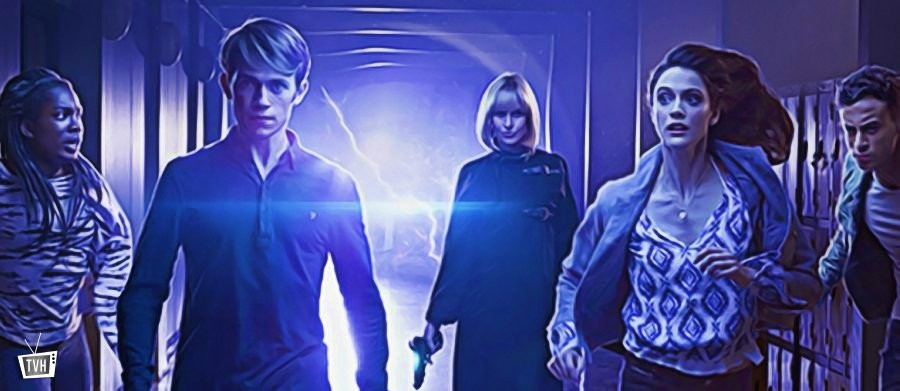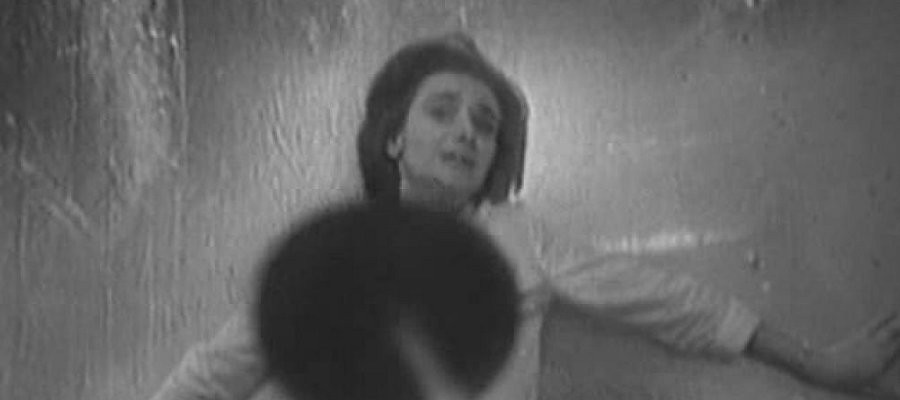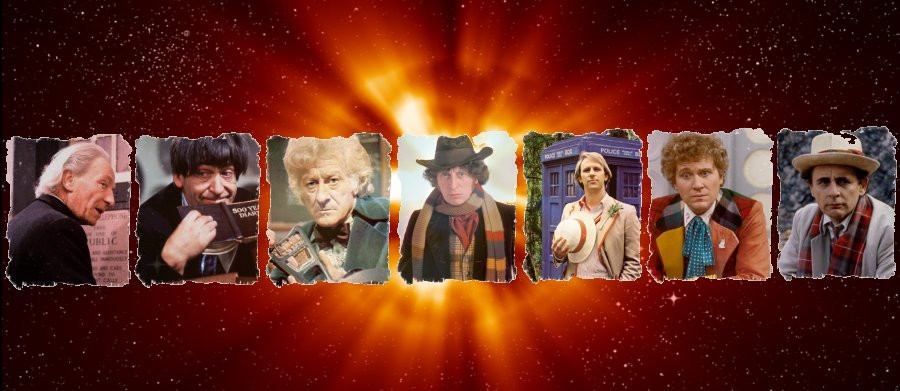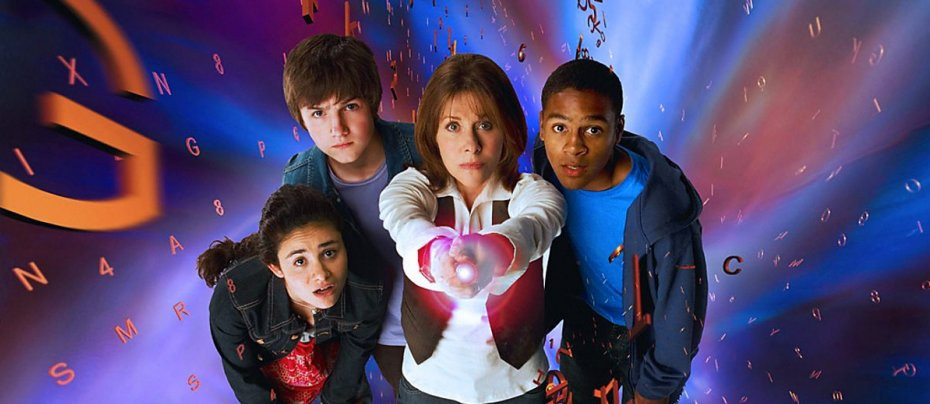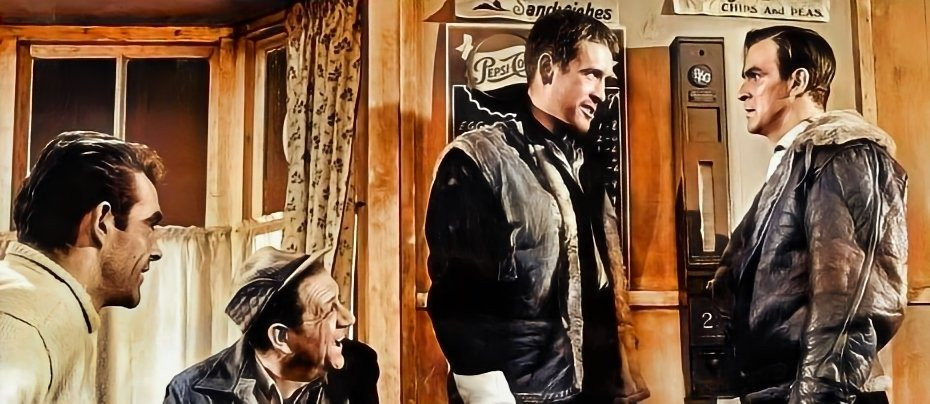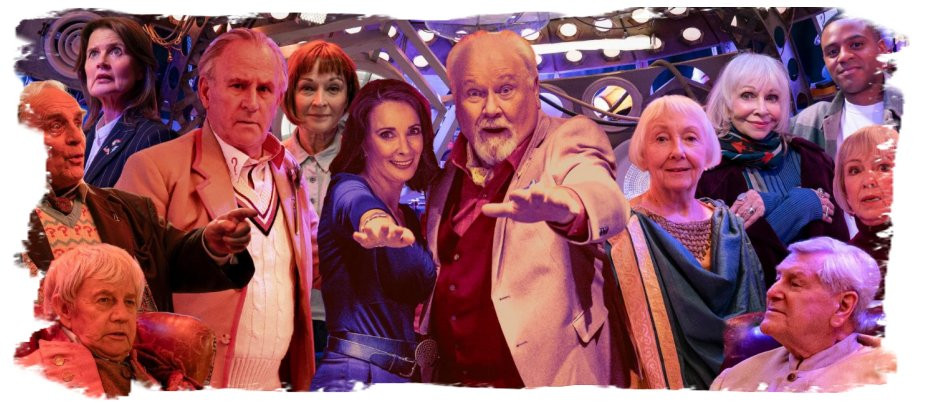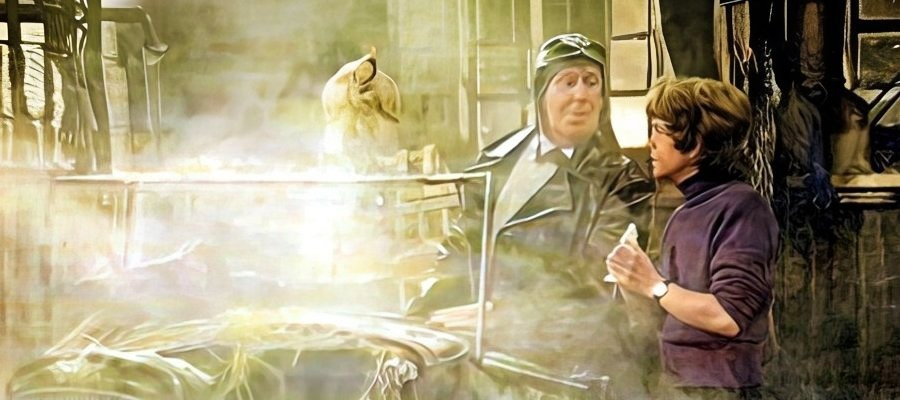The War Machines
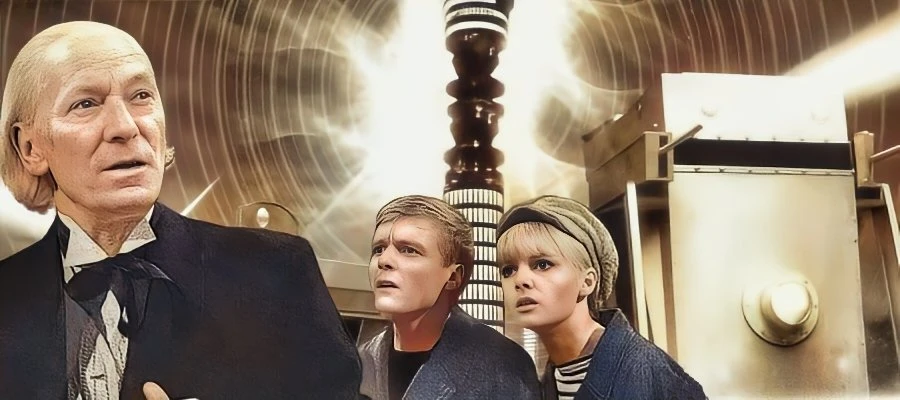
The final serial of Doctor Who's third season, The War Machines is the programme's first real attempt at a contemporary adventure. There had been episodes set in the 1960s before, but they had always been brief stopovers or under circumstances that prevented the TARDIS travellers going home. The War Machines, however, is set entirely in London, 1966, revelling in the culture and embracing cool for the first time (or at least as much as a middle-aged writer and a middle-class BBC production team could manage). It's a cutting edge story for the time, both as a speculative story of artificial intelligence and as a preview of what Doctor Who will look like in years to come.
Late June 1966: England is still a month away from winning the World Cup for the first (and only) time, but it's still a place that's becoming the centre of Western pop culture. The Beatles, the Stones, and the Kinks are at their height; Peter Cook and Dudley Moore are breaking apart the comedy scene; Steed and Peel are the best-dressed heroes on television; and people are still talking about Michael Caine in Alfie three months ago. London has finally begun to swing.
So, naturally, Doctor Who capitalises on this with a story about the Post Office Tower.
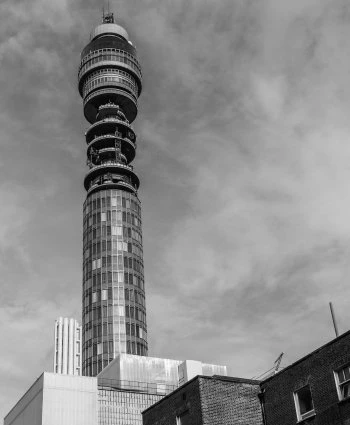
Well, the GPO Tower – these days known as the BT Tower, and still a useful landmark if you're lost in W1 – wasn't quite as cool as The Avengers, but it was a pretty major development in the UK. Opened in May that year, the Tower was the tallest structure in Britain at the time and was the centre of the country's telecommunications service via the microwave radio network. You could sit in the restaurant near the top and watch London below as you revolved above. It was an official secret in spite of being open to the public and visible from virtually anywhere in London. It was big, it was space age. It was the perfect landmark to centre a Doctor Who story around: a bit of science fiction in the middle of the capital.
In the Doctor Who universe, the Tower hosts one Professor Brett (John Harvey – The Adventures of Robin Hood, X the Unknown) a distinguished computer scientist who has created WOTAN: a gigantic supercomputer which is capable of complex thought. Not only that, but in a few days time, WOTAN will be hooked up to computers all across the world, in some kind of inter-network. Imagine that!
Yes, it looks silly now, sixty years on, but in 1966 the ARPANET project – the forerunner to the internet – had only just begun and wouldn't actually be online until 1969. While the design of WOTAN, with its spinning tape reels, is as archaic as the classic computer-y font used for the episode titles, the idea of a computer linked through telecoms to the rest of the world was very forward-thinking. The concept of a self-aware computer attempting to take over the world was already becoming well-established in science fiction, with the purely rational, logical machine mind inevitably deciding to either rule mankind for its own good or do away with it altogether. WOTAN (that's pronounced "Votahn," you know) is a wonderfully silly acronym: Will Operating Thought ANalogue. That it's also one of the many names for the Norse god Odin and also deeply Wagnerian adds something extra foreboding.
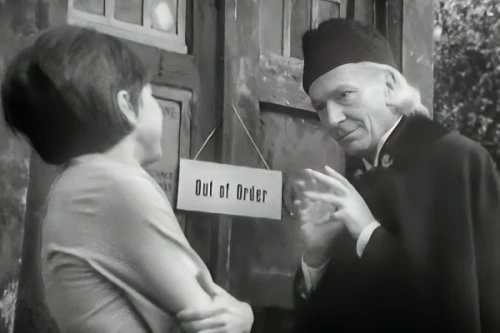
Plummy civil servant Sir Charles Summer (William Mervyn – The Odd Man, All Gas and Gaiters) rather bafflingly insists that there's no risk of someone trying to take over the most powerful computer in the world as there "would be no point," so is taken by surprise when the computer itself decides to start running its own plans. Fortunately, the Doctor has arrived, sensibly hanging an “Out of Order” sign on the TARDIS door to stop people trying to use it. He immediately has a strange feeling, like static electricity mixed with something evil, just like he supposedly gets when the Daleks are nearby. Dodo is impressed to see the GPO Tower finished, but the Doctor identifies it as the source of his funny feeling and sets off to investigate. (We assume it's WOTAN making hi hairs stand up on end, but a season later in The Evil of the Daleks we discover that the Daleks really are up to no good in London on that very day...)
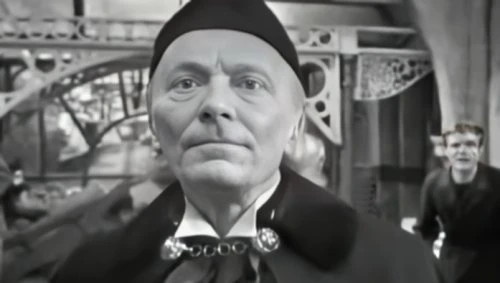
The Doctor weasels his way into the Tower using his scientific credentials. Oddly enough, he seems quite well known to the scientific community, as if he's become a well-established figure some time before. Even WOTAN wants him on side as soon as possible, demanding in a later cliffhanger that “DOC-TOR WHO ISSS RE-QUIRED” in its whispery voice. Try insisting that Doctor Who isn't his name now; WOTAN certainly seems to think it is. The Doctor spends a lot of this story checking notes with fellow scientists and ordering soldiers about. It's very much a glimpse of the programme's future, and this sort of thing will be business as usual by the time Jon Pertwee has the role. It's also, despite the lack of aliens in this story, not far off the Quatermass serials. If WOTAN started hissing “QUA-TER-MASS ISSS RE-QUIRED” no one would be surprised.
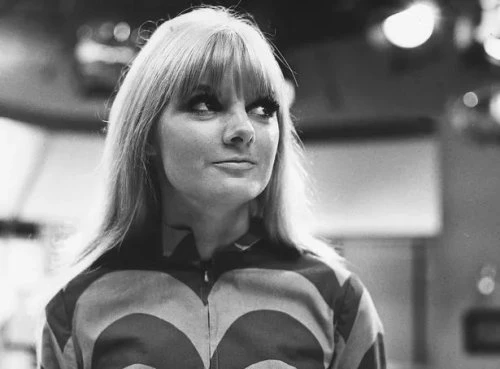
He introduces Dodo as his secretary (why doesn't he use that one more often? It would save a lot of questions) and Professor Brett introduces his: a rather posh young blonde who can hardly type to save her life. Anneke Wills (The Railway Children, The Strange Report) makes an immediate impression as Polly, the very image of sixties cool. Polly takes Dodo to the hottest nightclub in town, The Inferno. Finally in her own time and place, poor Dodo looks very out of her depth, surrounded by the cooler examples of British youth. Polly is assigned to cheer up a deeply depressed young sailor moping at the end of the bar. Michael Craze (Ivanhoe, Target Luna) makes an even bigger impression as handsome, charming, occasionally surly cockney Ben Jackson.
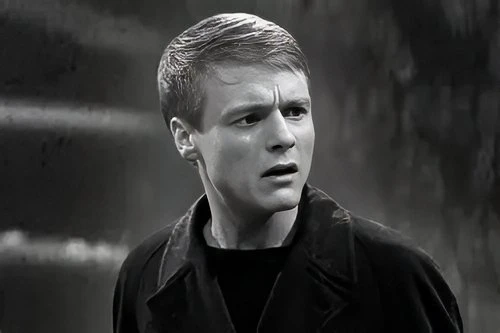
Ben isn't in the mood to be cheered up, being thoroughly fed up at being on a shore posting, but steps in to duff up some oik who comes on too strong to Polly. (He's a master of the martial arts; the temptation to shout “Judo chop!” is overwhelming.) Ben and Polly hit it off and rapidly become fast friends, and the clear suggestion is that there might be something more there. Fans certainly like to ship the characters, but while Polly might be up for a bit of rough, Ben doesn't really seem interested. He quickly insists he's not a “deb's delight” and is pining to be back on the sea with his fellow sailors. I'm not sure he's on Polly's team at all.
Poor Dodo hardly gets a look in, and soon enough she's been hypnotised by WOTAN over the phone and sent to convert the Doctor to the cause. She leaves to find him, but she should have stayed put: he turns up at the Inferno shortly after, looking for her. You see, the Doctor's clubbing days didn't start with Ncuti Gatwa. He's quite a hit thanks to his fab gear, although at least one of the patrons thinks he looks like “that disc jockey.” Even sixty years later, we know the one she means, but we don't talk about him anymore.
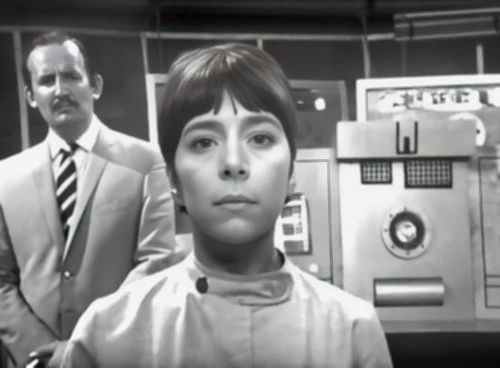
Eventually Dodo returns, and when she and the Doctor are back at their temporary digs, she tries to recruit him to the cause. He's far too sophisticated to fall under the WOTAN's influence, although he's pretty shaken up, and he's able to hypnotise Dodo himself to break her free of its control. Dodo is left traumatised and is invalided off to recover off-screen partway through episode two, and that's it. Jackie Lane was unceremoniously ditched from the programme the moment her contract expired. Innes Lloyd did apologise to her, but she pretty much quit acting straight after this. She eventually started a voice talent agency, representing actors including Tom Baker, Janet Fielding and Nicholas Courtney.
Ben and Polly find themselves rapidly drafted in as the new companions, although for Polly it's a short-lived affair at first, as she is soon hypnotised herself. Ben fulfils the action hero role (later on, he'll usually be the one who gets brainwashed) and while Polly is under the control of WOTAN, she has enough self-awareness to let Ben escape when he breaks into the computer's new factory. WOTAN has put its captive humans to work building the next phase of its plan for world domination: the eponymous War Machines. Enormous, lumbering box-like tanks with hammers for arms and fire extinguishers for guns, the War Machines are basically Daleks on steroids. Actually, there's only one of them; the Beeb couldn't afford to build more than one, so it's carefully filmed to look like there are, well, at least three.
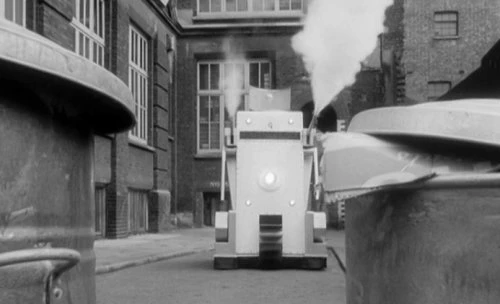
The Doctor gets one of his all-time coolest moments at the end of episode three, standing his ground in front of a War Machine, eyeballing it as it dares to approach him. It's exactly the sort of thing you can imagine one of the modern Doctors doing and everyone raving about it. Of course, he's very lucky that this particular machine has a malfunction, or he'd have been pulverised. While the War Machines get the honour of the serial's title, it's honestly far less interesting once they start rolling about the place, threatening Covent Garden. WOTAN's mind control, with his army of subservient acolytes droning on about how they're “happy to serve WOTAN” is far more chilling and more effective. That, however, wouldn't provide the spectacle the serial needs.
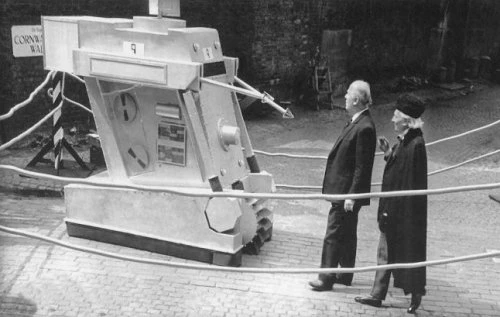
The serial is an interesting mix of being exceptionally of its time and forward-looking; of being entirely new for the programme yet somehow less exceptional than it has been in the past. Before The War Machines, there was never anything quite like Doctor Who on television. After The War Machines, the programme became rooted in the present day in a way it hadn't been before. Strange creatures, evil geniuses and bizarre phenomena suddenly began threatening the present day. The ground was set for Doctor Who as a contemporary adventure series. It would take a while though before it quite settled into this style. Season three ends with Ben and Polly sneaking on as the cool, attractive new TARDIS team. Season four would start very much with business as usual, before undergoing the biggest change the programme had yet seen.
Daniel Tessier (2025)


